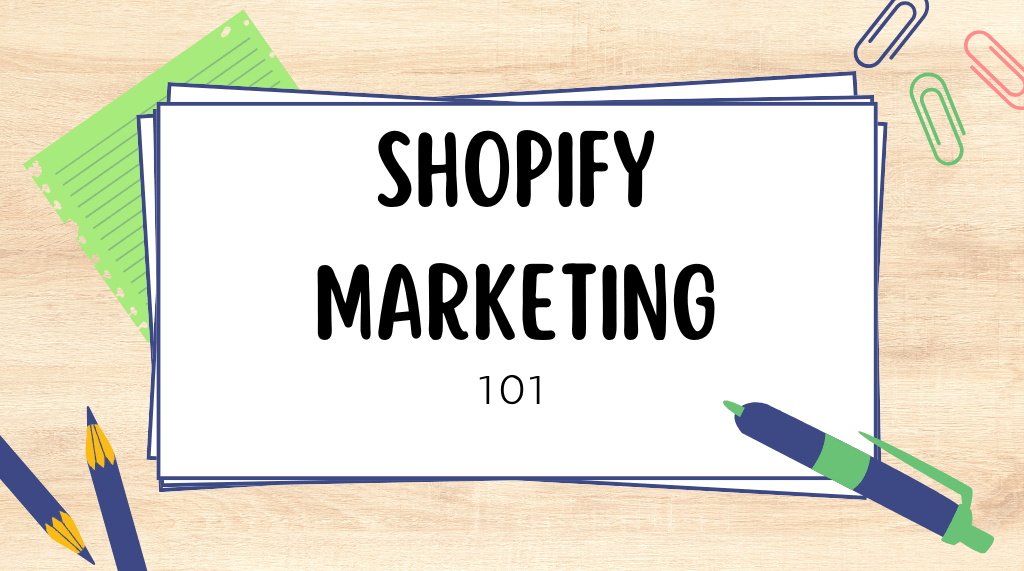Starting a Shopify store can feel like an exciting new venture, but for many beginners, it quickly becomes a journey filled with unexpected challenges. You might have set up your store envisioning a lifestyle of freedom, financial success, and entrepreneurship, only to find yourself struggling to attract sales. This blog will walk you through key strategies to effectively market your Shopify store, from positioning your products for impact to building brand trust and ultimately generating consistent traffic. Follow these steps to transform your Shopify experience from stagnation to a thriving e-commerce venture.
Step 1: Market the Product Outcome, Not Just Features
One common mistake many new Shopify entrepreneurs make is focusing too heavily on product features, like material quality or technical specifications, without considering the desired outcome for customers. Customers are driven by the potential transformation a product offers, whether it’s solving a problem, boosting confidence, or achieving a personal goal. Your job is to convey this transformative effect in your product descriptions.
For example, if you’re selling fitness gear, rather than listing its specifications, illustrate the impact it has on the user: “These gloves help you become a better boxer, protect your knuckles, and boost your confidence with superior craftsmanship.” Once the emotional appeal is established, then emphasize the quality details like premium leather, breathability, and durability. This approach resonates with customers’ emotions, creating a deeper connection with the product and, by extension, with your brand.
Step 2: Define Your Unique Selling Proposition (USP)
A crucial element of any successful marketing strategy is a strong Unique Selling Proposition (USP). With so many businesses vying for attention, standing out means articulating, in a single compelling sentence, why a customer should choose your Shopify store over others. There are three main approaches to defining a USP: a unique product, a unique promise, or unique value.
- Unique Product: Identify what sets your product apart. For instance, Apple’s iPhone is distinct because of its unique ecosystem and innovation. If your product is genuinely unique, lead with that as your USP.
- Unique Promise: This is about the experience customers can expect when they buy from you. Take Amazon’s promise: fast delivery and reliable service. If you can’t differentiate your product itself, make the experience you offer standout.
- Unique Value: Offering a value-added proposition or competitive pricing can also serve as your USP. Are you providing a product bundle, additional services, or an extended warranty? Highlight how these added benefits increase the overall value for customers.
Ideally, your Shopify store should combine all three, but focusing on at least one area can set you on the right path to crafting an attractive USP that catches customer attention and drives conversions.
Step 3: Establish Social Proof to Build Trust
Social proof is a powerful tool for boosting credibility and encouraging customers to trust your store. New shoppers, especially those unfamiliar with your brand, look for validation from previous buyers to confirm they’re making a safe choice. Social proof on your Shopify store can come in several forms:
- Customer Reviews and Ratings: Plugins like Judge.me, Yotpo, and Stamped make it easy to incorporate reviews on your product pages. Even a few reviews can significantly increase trust in your products.
- User-Generated Content: Encourage customers to share photos or videos of them using your products and feature these on your website or social media. This not only reinforces authenticity but also builds a community around your brand.
- Awards and Recognition: If your products have earned accolades or recognition from credible sources, display these prominently. Awards and certifications can provide reassurance to potential buyers about quality and reliability.
By showcasing social proof, you not only validate your brand but also create a network of satisfied customers who indirectly advocate for your products, making your Shopify store more enticing to new visitors.
Step 4: Leveraging Multiple Traffic Sources with the Traffic Trifecta
Once you’ve nailed down your product messaging, USP, and social proof, it’s time to drive traffic to your Shopify store. One powerful way to approach this is through the Traffic Trifecta—a model that uses a mix of traffic sources to maximize visibility and customer acquisition. This strategy divides traffic into three categories:
- Paid Traffic: Paid ads are an excellent way to get customers fast. Platforms like Google Ads, Facebook Ads, and TikTok Ads allow you to target specific audiences and drive immediate visits to your store. Paid ads are particularly valuable when testing new products or offers since they yield instant feedback. It’s a quick way to see if your product, USP, and social proof resonate with potential buyers.
- Owned Traffic: Owned traffic refers to channels where you have direct access to your audience—like email lists, SMS marketing, and social media followers. These are invaluable because they allow you to reach customers with little to no additional cost, helping you re-engage them with new offers or product updates. Regular email campaigns, exclusive offers to SMS subscribers, and engaging social media posts ensure that your audience remains engaged with your brand.
- Earned Traffic: Earned traffic encompasses all the exposure and customer engagement your brand receives organically, typically without direct advertising costs. This category includes word-of-mouth referrals, social shares, and SEO-driven visits from search engines. Earned traffic also stems from high-quality, shareable content—think blog posts, tutorials, user-generated content, and reviews—that builds your brand’s authority and trust over time. To leverage earned traffic effectively, focus on creating valuable content that resonates with your target audience. For instance, write blog posts that answer common customer questions, share behind-the-scenes or success stories on social media, and encourage satisfied customers to leave reviews or share their experiences. Optimizing your site’s SEO is also essential, as it helps drive more organic traffic from search engines, which is a sustainable way to increase visibility without continuous ad spending.
Step 5: Enhancing On-Site Conversion Rates (CRO)
Conversion Rate Optimization (CRO) is all about maximizing the percentage of visitors who complete a purchase. Here are some techniques to improve CRO on your Shopify store:
- Simplified Checkout Process: Streamlining checkout is critical for reducing cart abandonment. Offer multiple payment methods (like PayPal, credit cards, and Buy Now, Pay Later options) and ensure that your checkout process is simple, fast, and mobile-friendly. Abandonment cart recovery emails and pop-ups also help recapture sales by reminding customers about the items they left behind.
- Clear and Compelling Product Descriptions: Your product descriptions should be concise but packed with value. Use bullet points to highlight features, benefits, and usage tips. Combine them with high-quality images or videos that showcase the product from multiple angles and in real-life settings, providing customers with an in-depth view of what they’re buying.
- A/B Testing and Heatmaps: A/B testing tools, like Google Optimize or Shopify’s own A/B tools, allow you to test different versions of product pages, headlines, or CTA buttons to determine which designs or phrases convert best. Additionally, heatmap tools like Hotjar or Crazy Egg let you track where customers click, scroll, and linger, helping you identify which page elements draw attention—and which might need reworking.
- Exit-Intent Pop-Ups with Offers: An exit-intent pop-up provides one last chance to secure a sale by offering a small discount or incentive (like free shipping) when a customer shows signs of leaving the page. This tactic can make the difference in getting an indecisive visitor to complete their purchase.
- Trust Badges and Security: Displaying trust badges like SSL security seals, “100% Satisfaction Guarantee,” or “Money-Back Guarantee” on your site reassures customers about the safety and reliability of your store. Emphasizing a customer-first return policy also alleviates buying hesitancy.
Step 6: Creating a Customer Retention Strategy
Once a customer has made a purchase, retention becomes your next focus. Retaining customers is cheaper than acquiring new ones and leads to stronger brand loyalty and repeat sales. Key strategies for retention include:
- Personalized Email Marketing: After a purchase, stay connected with your customers through personalized emails. Segmentation, which allows you to send tailored messages based on purchase history or browsing behavior, can significantly improve engagement. Emails could include cross-sell suggestions, notifications about new arrivals, or loyalty rewards.
- Loyalty Programs and VIP Tiers: Loyalty programs incentivize repeat purchases by offering points for each purchase, referrals, or social media shares. Programs like Smile.io or Yotpo Loyalty let you reward customers and introduce VIP tiers, where customers can unlock exclusive discounts or perks after a certain spending threshold, building an ongoing relationship.
- Post-Purchase Follow-Ups and Feedback Requests: A few days after an order is delivered, send a follow-up email to thank the customer and request feedback. Not only does this show you value their opinion, but it also offers insights to improve your products and service. Positive feedback can be featured as reviews, while constructive feedback can be used to enhance the customer experience.
- Seasonal and Special Offers: Use major shopping events (like Black Friday, Mother’s Day, or holiday seasons) to re-engage past customers with exclusive offers. Keep these promotions personalized or target customers based on their preferences and past purchases for higher conversion rates.
Step 7: Analyzing Performance and Making Data-Driven Adjustments
Regularly analyzing and adjusting your marketing, sales, and customer service efforts is key to sustainable growth. Here’s how to leverage data for constant improvement:
- Monitor Key Metrics in Shopify and Google Analytics: Shopify provides insights into sales, average order value, customer acquisition costs, and retention rates. Google Analytics can give deeper insights into traffic sources, bounce rates, and visitor demographics. Both platforms help identify high-performing and underperforming areas, so you can target adjustments accordingly.
- Track Ad Campaign Performance: For paid traffic, review the performance of each ad campaign in terms of click-through rate, cost per acquisition, and overall ROI. Ads that perform well can be scaled, while those that underperform can be adjusted or discontinued. Regular review ensures you’re investing your advertising budget where it matters most.
- Customer Feedback Analysis: Consistently gathering and analyzing customer feedback—whether from reviews, social media, or direct surveys—allows you to adjust product offerings, messaging, or service elements in line with customer expectations. Understanding customers’ likes, dislikes, and suggestions makes for a stronger customer-centric approach.
- Continuous Testing and Iteration: Successful e-commerce brands never stop testing. Consistently tweak product pages, test new offers, and experiment with messaging to keep your store optimized. Over time, these small adjustments compound, helping you maximize sales and continually improve the customer experience.
Conclusion: Putting It All Together for Long-Term Success
Building and scaling a Shopify store that stands out requires more than just a good product. It takes an intentional approach to messaging, customer engagement, multi-channel traffic strategies, and ongoing data-driven adjustments. With these steps in place—solid branding, a unique USP, social proof, and robust customer acquisition and retention strategies—you’re well on your way to creating a thriving Shopify store. Remember that consistency, experimentation, and customer focus are key to long-term success in e-commerce.
With these foundations and advanced strategies, you’ll be equipped not only to launch successfully but also to scale your Shopify business, capturing and keeping a loyal customer base that values your brand and products.




